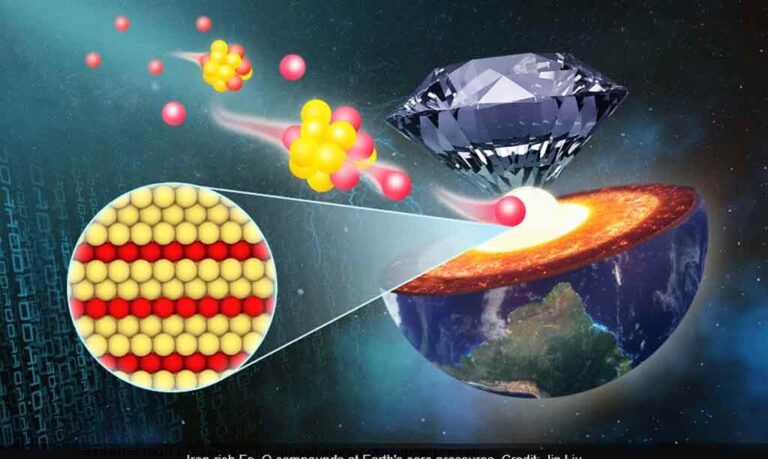Scientists co-led by Dr. Jin Liu from HPSTAR (the Center for High Pressure Science &Technology Advanced Research) and Dr. Yang sun from Columbia University reveal that Fe-rich Fe–O alloys are stable at extreme pressures of nearly 300 GPa and high temperatures of more than 3,000 K.
At present, it is believed that light elements exist in the inner core, but the type and content are still debated. Cosmochemical and geochemical evidence suggests that it should contain sulfur, silicon, carbon, and hydrogen.
Experiments and calculations also confirmed that these elements mix with pure iron to form various Fe alloys under high temperatures and high-pressure conditions of the deep Earth.
However, oxygen is usually excluded from the inner core. This is mainly because Fe–O alloys with iron-rich compositions have never been found in the surface or mantle environments.
Is the Earth’s inner core so “anoxic?” To answer this question, a series of experiments and theoretical calculations were carried out in this study.
To be close to the temperature and pressure of Earth’s core, pure iron and iron oxide were placed on the tips of two diamond anvils and heated with a high-energy laser beam. After many attempts, it was found that a chemical reaction between iron and iron oxide occurs above 220–260 GPa and 3,000 K.
The XRD results reveal that the reaction product is different from the common high-temperature and high-pressure structure of pure iron and iron oxide.
Theoretical crystal structure search using a genetic algorithm proved that the iron-rich Fe–O alloy could exist stably at approximately 200 GPa.
Under such conditions, the new Fe-rich Fe–O alloys form a hexagonal close-packed structure, where the oxygen layers are arranged in between Fe layers to stabilize the structure. Such a mechanism produces many close-packed arrangements forming a large family of Fe-rich Fe–O compounds with large configurational entropy.
Based on this theoretical information, an atomic configuration of Fe28O14 was found to match the experimentally measured XRD pattern.
Further calculations showed that Fe-rich Fe–O phases are metallic, in contrast with common iron oxides at low pressures. The electronic structure depends on O concentration and the Fe and O layer arrangements. The mechanical properties and thermal properties of the alloy need to be further studied in the future.
pll/rgh/lpn










